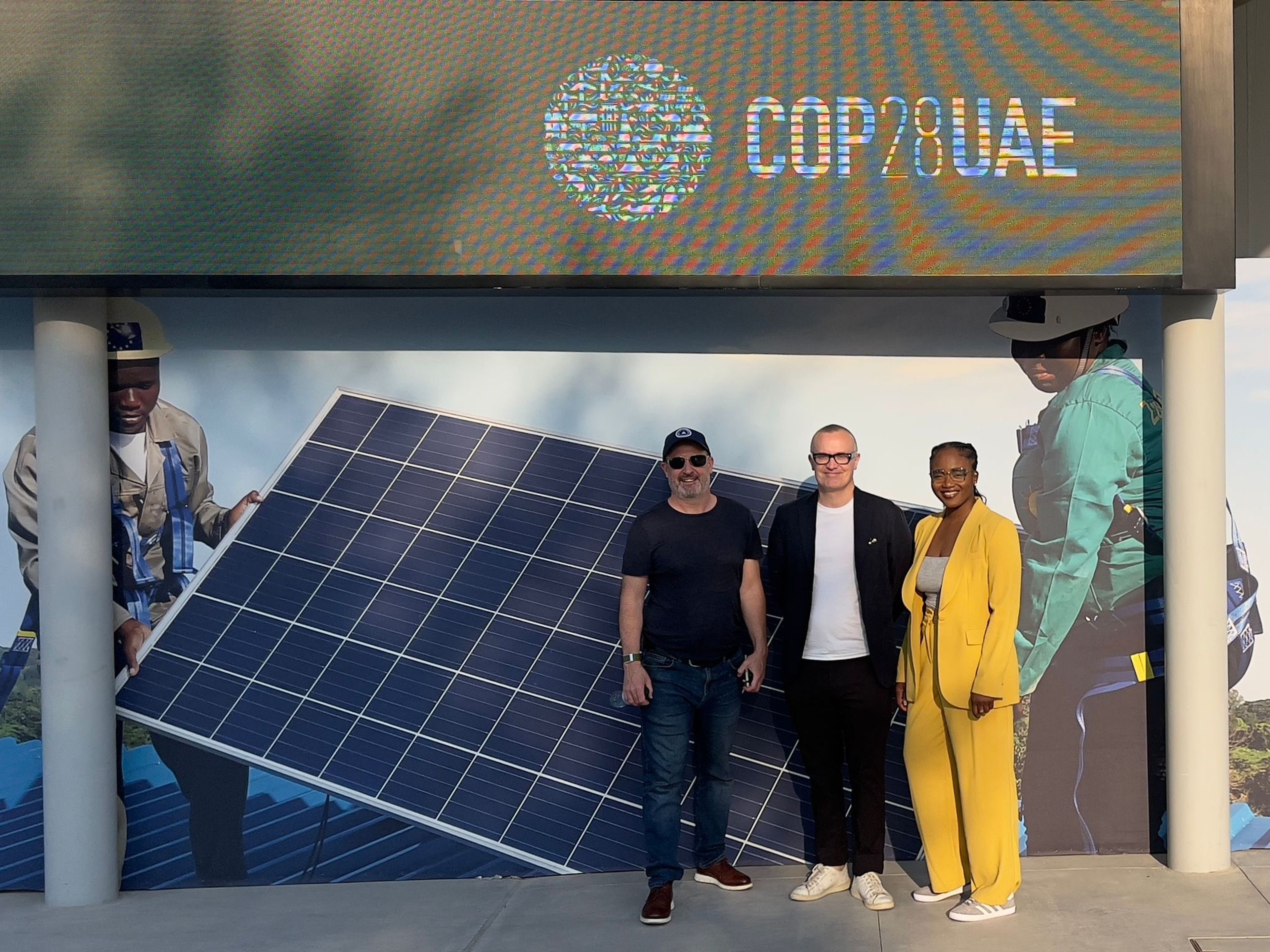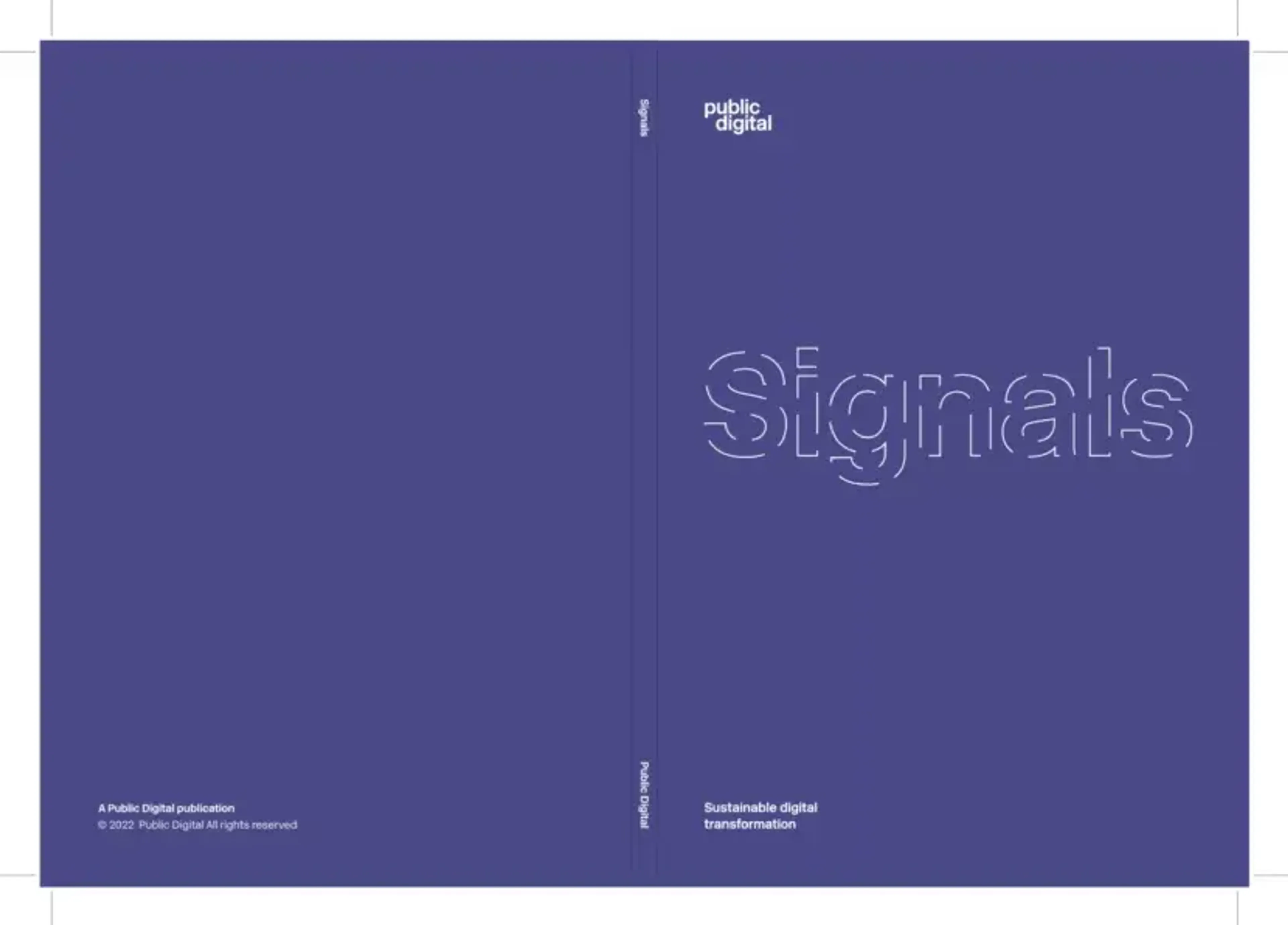
How digital transformation can drive the green transition
Alongside the first-ever Digitalisation Day at COP29 – where industry leaders, governments and civil society will sign the Declaration on Green Digital Action – Public Digital explores how digital technology and ways of working are critical to a green transition.
The climate crisis is confronting organisations across the globe with the need to adapt to challenges from many directions — technology, society and the planet. As U.N. Secretary-General Antonio Guterres stated at COP29, "The sound you hear is the ticking clock. We are in the final countdown to limit global temperature rise to 1.5 degrees, and time is not on our side."
At Public Digital, we’re on a journey to becoming a greener, more sustainable business and adopting an approach that is inherently mindful of social and ecological impact. We’re also working with our clients — some of the world's largest institutions, governments and businesses — to help them become future-ready in an uncertain and changing world. To do this, we look to what we have learned from many years of supporting successful digital transformation.
Inevitably, digital transformation and the green transition present organisations with complex challenges, requiring companies and institutions to be agile, responsive and adaptable as they learn and grow.
The obstacles to delivering the green transition
So what exactly is a green transition? It’s the radical and large-scale reinvention of the economy and society in ways that reduce emissions, improve biodiversity and provide fairer outcomes for everyone – and governments are increasingly under pressure to support it. The gap between ambition and tangible action – as COP29 highlights – is evident. So what makes action challenging for governments and large organisations?
Action is complex
The transition is a profoundly complex challenge, cutting across national, legal, political and organisational boundaries. Many don’t know where to start – or how to balance – competing priorities. Take the energy sector, where short-term energy security is often in tension with longer-term renewable energy policy. This tension can be compounded by resourcing issues or the complications presented by unexpected global crises.
Action is hard to scale
Often, action can be disjointed, short-lived or hard to scale. Existing ways of working may be siloed or reflect internal political, governance or funding structures. This makes it difficult to devise effective policy and regulation and to form implementation teams that can see, plan, fund and deliver ambitious targets.
Action is hard to verify
A lack of connected data systems and inconsistent measurement in sustainability monitoring prevent governments from assessing progress against their sustainability commitments. This, in turn, removes accountability, making it difficult to use resources strategically and make equitable and just decisions, further contributing to climate inertia.

How digital transformation can help
Digital ways of working that emphasise rapid iterating can help catalyse action and get governments started. Here’s what we recommend.
Starting small but bold
For example, as part of its digital transformation, the UK Government’s Department for Food and Rural Affairs selected a role model service to build as it transformed how it regulates and subsidises farming. A controlled product rollout to targeted users allowed rapid identification and addressing of policy and service-based issues. Their learnings helped them improve funding options for farmers and reduce processing time from six months to 24 hours.
Building platforms for scale
Digital Public Infrastructure (DPI) provides essential society-wide functions and services — such as digital ID, payments systems and data exchange — that can be utilised across a wide range of climate change adaptation and climate change mitigation use cases. If such solutions are built as digital public goods — using open source and open standards — stakeholders across the economy can contribute to climate action through innovative solutions.
Scale not only ensures bigger impact but also makes for a smarter, more targeted one. For example, linking digital payments with early weather warning systems and enabling pre-emptive payments for flood victims, allowed Bangladesh to dramatically increase food security.
Strengthening monitoring and verification
Finally, digital can help track and validate action, which is key to building measurable progress, transparency and the trust needed to drive cooperation. A good place to start is focusing on how to improve the data collection processes required to meet climate targets, as stipulated by global governance. Technologies such as satellite imagery or remote sensing can drive meaningful action with real-time monitoring.
Jordan is one of the first developing countries to have made significant progress in developing an end-to-end Measurement Reporting and Verification (MRV) framework and climate policies, allowing stakeholders to track emissions, the initiatives implemented to reduce them and their subsequent impact across sectors. Jordan’s approach has scaled across more than 20 ministries and is designed in open source allowing others to adopt it.
Greening digital
While digital transformation can be leveraged to drive green transitions, it is important to make digitisation itself sustainable; to keep climate protection, data protection and social justice in mind.
Finding digital “twin efficiencies”
There is a move towards making the business case for digital transformation and service delivery by measuring efficiencies in “twin terms” of both financial impact and carbon footprint.
We’ve long been fans of Bangladesh’s Time Cost Visits framework for monitoring and improving services, and several members of our team worked on the UK Government’s Digital Efficiency review.
In Public Digital’s recent work with the government of Iceland, we explored opportunities for further digitising their services, with a clear case emerging that an increase in digital delivery could substantially reduce the number of face-to-face visits, therefore cutting carbon-intensive travel.
Measuring the maturity of green software
Another area of emerging practice is in helping software developers design for sustainability. Greengage, an open-source tool developed by Kainos, enables teams and organisations to rate the maturity of their green software practices, allowing them to better identify ways to reduce the carbon impact of software.
Setting a new standard
Aligning practice around a shared technology standard can help drive clarity and consistency in how we map, measure and mitigate the impacts of technology. The company Scott Logic has proposed a standardised framework for assessing and managing technology-related carbon emissions that enables consistent analysis and benchmarking of the carbon impact. This allows leaders and practitioners to quickly identify areas for attention based on their organisation’s unique footprint and helps facilitate productive conversations with sustainability stakeholders.

As COP29 has highlighted, there is an urgent need for climate action to keep global warming within 1.5°C, and digital technology and transformation can play a critical role in this "twin transition." At Public Digital, we see immense potential in aligning digital transformation with current climate goals, creating new opportunities for impactful change.
Please get in touch if you want to learn more.
Written by

Lauren Kahn
Head of Global Impact
